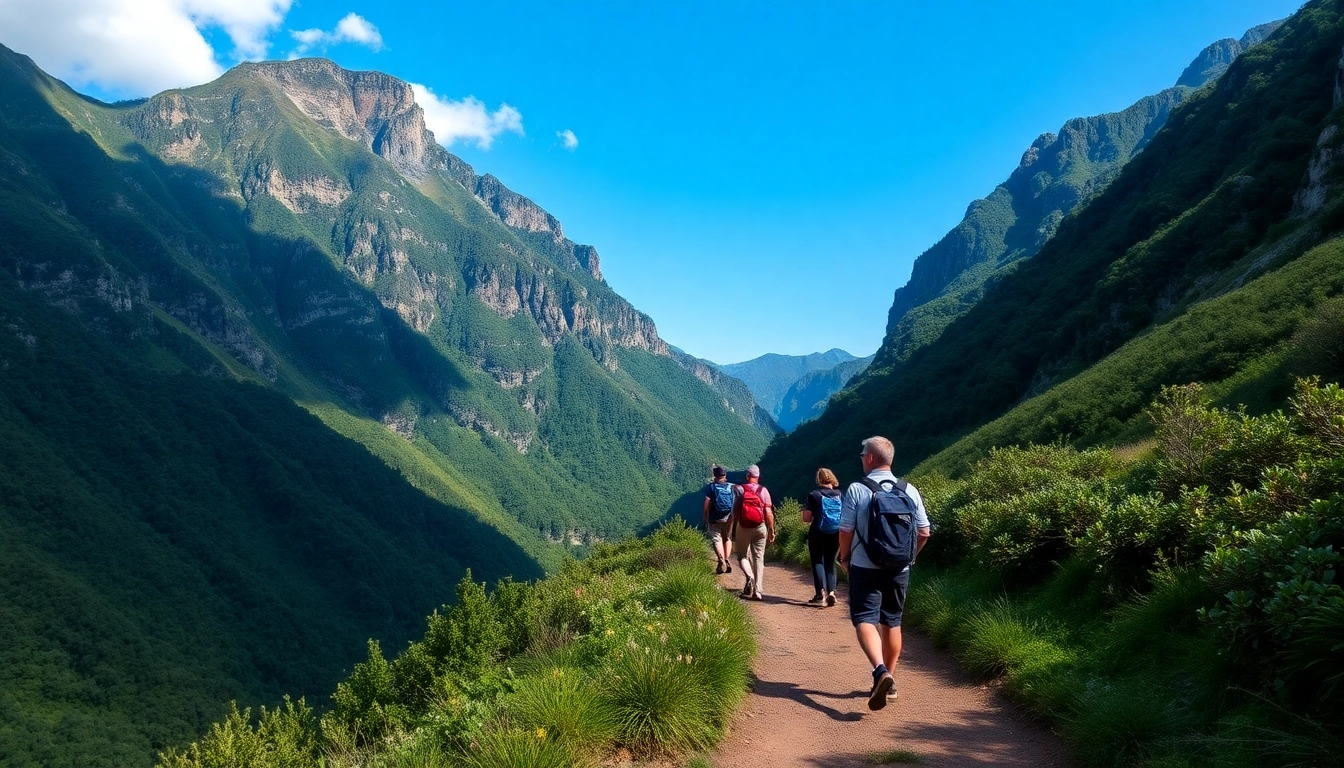Embarking on a hike through Indonesia’s breathtaking landscapes offers an unparalleled adventure that combines natural beauty, cultural richness, and physical challenge. Whether you’re a seasoned trekker or a beginner exploring outdoor activities, understanding the fundamentals of hiking, the unique styles available, and the practical tips for planning your journey is essential for maximizing safety and enjoyment. Indonesia, with its diverse terrains ranging from lush rainforests to volcanic peaks, provides an ideal playground for hiking enthusiasts seeking both tranquility and adrenaline rushes. This comprehensive guide aims to equip you with the knowledge to begin your hiking exploration confidently, offering insights that illuminate every step of your journey across Indonesia’s scenic trails.
1. Understanding Hiking: Fundamentals and Types
Defining a Hike: What It Really Means
At its core, a hike refers to a long, vigorous walk typically undertaken along trails or footpaths in natural settings. This activity offers not only physical exercise but also mental rejuvenation, allowing hikers to reconnect with nature and escape urban environments. Unlike casual strolls, hikes often involve multi-hour or even multi-day journeys through varied terrains, demanding endurance, preparation, and awareness. In essence, hiking is an experience that combines physical activity with environmental appreciation, providing a sense of accomplishment and serenity.
In the Indonesian context, hiking may range from gentle walks through coastal forests to challenging ascents of volcanic mountains such as Rinjani or Semeru. The activity appeals to both local residents and international travelers seeking adventure, tranquility, or cultural immersion. Recognizing what constitutes a hike helps participants set appropriate expectations and select suitable trails that match their skills and interests.
Differences Between Hiking, Trekking, and Walking
While these terms are often used interchangeably, understanding their distinctions enhances planning and safety. Walking generally refers to a casual, relaxed activity on flat, well-maintained surfaces like city sidewalks or park pathways. It requires minimal preparation and is suitable for everyday recreation.
Hiking, on the other hand, involves walking on natural trails that may feature uneven terrain, elevation changes, and obstacles, requiring appropriate footwear and some level of physical fitness. Hiking can be a leisurely activity or a strenuous endurance endeavor depending on the trail.
Trekking typically denotes longer, more arduous journeys that may span multiple days, sometimes over remote or rugged terrains such as mountain passes and wilderness regions. Trekkers often carry more gear, plan overnight stops, and undertake substantial physical and logistical preparation. In Indonesia, trekking might involve multi-day expeditions into remote jungles or across volcanic landscapes, demanding a higher level of resilience and planning.
Understanding these differences helps adventurers choose trails aligned with their experience levels and expectations, ensuring safety and enjoyment.
Popular Hiking Styles in Indonesia
Indonesia is a melting pot of diverse hiking styles, each appealing to different preferences and skill levels:
- Summit Climbing: Conquering volcanoes like Mount Rinjani (Lombok), Mount Bromo, or Mount Semeru presents an exhilarating challenge with rewarding panoramic views.
- Forest Trekking: Exploring dense rainforests in regions such as Gunung Leuser or Bukit Dua Belas offers opportunities to witness wildlife and unique flora.
- Cultural Hiking: Traversing rural villages and historical sites while engaging with local communities provides a blend of natural beauty and cultural insight.
- Coastal Trails: Walking along beaches and cliffs, such as those in Bali’s Uluwatu or Lombok’s Meno Peninsula, offers spectacular ocean vistas and serene environments.
Choosing your style depends on your adventure level, interests, and the landscape you wish to explore. Indonesia’s terrain creates a perfect setting for all these styles, making it a versatile hiking destination.
2. Planning Your Hike: Preparation and Safety
Choosing the Right Trail in Lombok and Beyond
Success and safety in hiking start with careful trail selection. Factors to consider include:
- Difficulty Level: Match the trail’s technical requirements with your fitness and experience. For beginners, gentle walks around rice terraces or coastal paths are ideal, while advanced hikers might seek volcanic summits or jungle treks.
- Trail Length and Duration: Be realistic about your available time and stamina. Some trails can take several hours or days to complete.
- Weather Conditions: Indonesia’s tropical climate can bring sudden rainstorms or high humidity, influencing trail safety and comfort.
- Accessibility and Permits: Certain regions, especially protected parks or sacred sites, require permits or guides. Research ahead to avoid surprises.
Popular routes include Gunung Rinjani’s crater lake, which attracts experienced climbers, and easier trails like the Kebun Raya Botanical Garden in Lombok. Utilizing local guides and official maps enhances safety and enriches your experience.
Gear and Equipment for a Successful Hike
Proper gear substantially impacts your comfort and safety. Essential items include:
- Footwear: Well-fitted hiking boots or trail shoes with good grip to handle rocky, muddy, or uneven terrain.
- Clothing: Lightweight, moisture-wicking layers, a waterproof jacket, and sun protection gear such as hats and sunglasses.
- Navigation Tools: GPS devices, maps, and a compass, especially for off-trail or remote hikes.
- Safety Equipment: First aid kit, multi-tool, headlamp or flashlight, and a whistle.
- Hydration and Nutrition: Sufficient water bottles or hydration systems, energy bars, and snacks to sustain energy levels.
- Additional Items: Sunscreen, insect repellent, and a camera for capturing moments.
Investing in quality gear, tailored to Indonesia’s climate and terrain, ensures your hike remains enjoyable and safe regardless of conditions.
Safety Tips and Emergency Preparedness
While Indonesia’s wilderness offers fantastic sights, hazards such as sudden weather changes, wildlife encounters, or trail injuries must be anticipated. Implement these safety practices:
- Research your trail thoroughly: Know the difficulty, terrain, and emergency exit points.
- Hike with a group or inform someone: Share your itinerary and expected return time.
- Respect local regulations and customs: Access to sacred sites or protected areas may have specific rules.
- Stay on marked trails: Reduces the risk of getting lost or damaging fragile ecosystems.
- Emergency contacts: Keep a list of local rescue services and park authorities.
- Weather awareness: Be prepared to turn back if conditions worsen, especially during monsoon season.
Preparation and vigilance are key to enjoying Indonesia’s scenic trails safely, allowing you to fully immerse in the adventure without undue concern.
3. Best Practices for a Memorable Hiking Experience
Leave No Trace: Environmental Responsibility
Protecting Indonesia’s pristine landscapes is crucial for their preservation and future enjoyment. Adopt the Leave No Trace principles by minimizing your environmental impact through:
- Carrying out all trash and waste.
- Sticking to established trails to prevent erosion.
- Avoiding disturbing wildlife and plant life.
- Respecting cultural sites and local customs.
- Using eco-friendly products whenever possible.
Practicing responsible hiking ensures that natural and cultural treasures remain intact for future generations.
Physical Fitness and Training Tips
Preparation extends beyond packing gear. Building your fitness enhances endurance, reduces injury risk, and increases enjoyment. Effective strategies include:
- Regular cardiovascular exercises like running, cycling, or swimming.
- Strength training focusing on legs, core, and back muscles.
- Hiking with loaded backpacks to simulate trail conditions.
- Flexibility exercises and stretching routines.
- Gradually increasing hike durations and difficulty levels.
Consulting with fitness professionals or experienced hikers can tailor a training plan suited to your goals and fitness level.
Capturing the Moment: Photography Tips for Hikers
Memories of Indonesia’s stunning landscapes can be preserved through thoughtful photography. Tips include:
- Arranging your shot during “golden hours” – early morning or late afternoon for soft, warm light.
- Utilizing wide-angle lenses to capture vast scenery and dramatic vistas.
- Including foreground elements like flowers or rocks for depth.
- Ensuring stability with tripods or steady hands for sharper images.
- Respecting the environment by avoiding damaging delicate plants or terrain.
Documenting your hike adds a personal touch to your adventure and inspires others to explore Indonesia’s natural wonders.
4. Enhancing Your Hiking Journey in Indonesia
Hidden Trails and Local Secrets to Discover
Beyond popular routes, Indonesia abounds with lesser-known trails that offer solitude and authentic experiences. Examples include:
- Segara Anak Lake trail in Lombok, leading to remote volcanic craters.
- Jungle paths in Tanjung Puting National Park, home to orangutans.
- Hidden waterfalls in Bali’s northern regions like Sekumpul or Munduk.
Exploring these lesser-trodden paths requires local guides and extra preparation but rewards hikers with unspoiled beauty and cultural immersion.
Cultural Insights and Respect for Local Communities
Hiking in Indonesia often intersects with indigenous communities and local traditions. Showing respect involves:
- Obtaining permission when entering sacred or community sites.
- Supporting local economies by purchasing crafts or services.
- Engaging with local customs graciously and knowledgeably.
- Preserving cultural heritage by refraining from disrespectful behavior.
Integration with local communities enhances your experience and promotes sustainable tourism.
Hiking Events and Guided Tours in the Region
Participating in organized hikes or guided tours can improve safety and enrich understanding. Look for events like:
- Mountain climbing expeditions organized by local agencies.
- Eco-trekking programs supporting conservation efforts.
- Cultural hikes with local guides sharing stories and traditions.
These experiences foster camaraderie, safety, and deeper insights into Indonesia’s diverse landscapes and cultures.
5. Improving Your Hiking Skills Over Time
Tracking Progress and Setting Goals
Continuous improvement is achieved by setting tangible objectives such as:
- Completing a certain number of trails per season.
- Climbing specific peaks or distances.
- Enhancing technical skills for more challenging terrains.
Utilize hiking apps or journals to record distances, elevation gains, and personal achievements, fostering motivation and recognition of growth.
Trekking vs Hiking: Advanced Techniques
Advanced hikers may explore techniques such as:
- Navigating off-trail terrain with compass and map skills.
- Managing multi-day treks with proper gear selection and camp setup.
- Conducting high-altitude hiking or ice and snow traverses where applicable.
Investing in courses or mentorship from experienced guides can significantly elevate your skills and safety preparedness.
Gear Upgrades and Staying Motivated
As your experience grows, upgrading equipment—such as lighter backpacks, technical clothing, or advanced navigation devices—keeps hikes enjoyable. Staying motivated involves setting new challenges, sharing adventures with fellow hikers, and continuously exploring new regions within Indonesia’s vast landscape. Continuous learning and gear investment are keys to long-term success and satisfaction in hiking pursuits.

